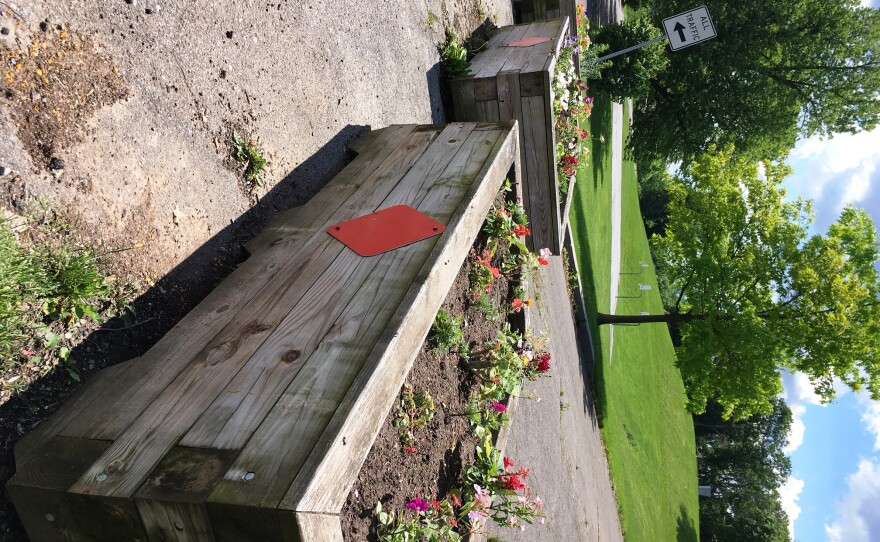The Syracuse parks department is marking a century of operation, years after many parks were already established. One of them is Onondaga park in the Strathmore neighborhood.
Kelly Wise says it was her family’s first weekend in the neighborhood nine years ago this month when her connection to Strathmore and Onondaga Park began.

“I woke up to somebody ringing my bell, saying that there’s Art on the Porches today in front of your house, and we need to plug a stage into your house, and I thought, ‘What are you talking about?’ And we spent the entire day at a lovely art festival on Ruskin Avenue being welcomed by hundreds of neighbors. And I thought, ‘Well, I’ve landed someplace really quite special, haven’t I?’”
Before she knew it, she joined the neighborhood association, and is now, as she says, in the 4th year of a two year term as president.
We start our stroll through Upper Onondaga at the restored firebarn, and we’re soon at Hiawatha Lake, which first served as a reservoir.
“The parks department has the lake lowered this summer because they’re doing repairs. We desperately needed infrastructure repairs in this park for the last few years. Our stone walls, which are original, there’s places of it that are extremely dangerous and crumbled, and all these stone walls and the gazebo all went in about 1900, 1908, somewhere around there.”

A crew was also busy replacing the roof on the gazebo, one of the most popular wedding photography spots in the city. Wise says restorations will be as historically accurate as possible…a standard that even applies to the trees.
“Last fall, Onondaga Earth Corps planted 100 trees in this park, all in their historically accurate places. And that’s a very cool thing, because every single tree in this park is mapped. Some of them have probably been here since the beginning of the park.”
Which was around 1900. She says mapping of the trees began after many were lost or damaged a by the Labor Day storm of 1998.
We continued our tour…
“We’ll go see our bridge. Because it wouldn’t be Onondaga Park without taking a walk over the bridge. So, our bridge is in a state of disrepair, and it will be repaired this summer….”

Wise says a lagoon used to be on the other side of the bridge, and team of gardeners tended to the many plantings nearby. She says it was a different time.
“…The lives of women back in the early 1900’s, versus the lives of women now…So there were teams of women, neighborhood women…this was their project place. They were gardening and planting and maintaining, and it was truly, truly lovely.”
We then head to what’s known as Monkey Island, a hidden, peaceful, but overgrown spot with amphitheater-style seating
“It’s probably my favorite place in the park. Of course, you can’t see it very well, and it’s not full of water yet for some reason, but up in here, here’s the waterfall. Can you see why kids love this thing? This is usually roaring with water, and it comes down to fill this entire pond…”
Wise hopes to recruit the city, OCC, SUNY ESF, and the Onondaga Earth Corps to help remove overgrown trees and brush, and restore monkey island. As we wrapped up our tour, wise acknowledges she didn’t know about the park when she first moved to the neighborhood…but she hopes others can learn to treasure it like she has.
“I think in some ways people don’t really take the time to walk around this park like we are, and to see how truly beautiful it is, to understand that they were planned parks. They’re planned green spaces; people live around them on purpose. We really do need to encourage city residents who live by city parks to use their city parks, to make it your city park, to take the space, use the space, enjoy the space, because they really are truly beautiful.”

















